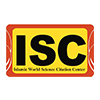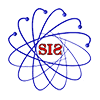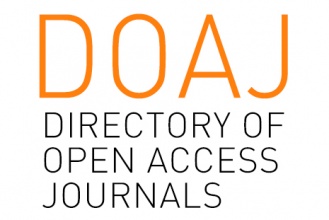Biomechanical Analysis and Optimization of Athlete Performance through Sepak Takraw Sports Movement Evaluation
Abstract
Keywords
Full Text:
PDFReferences
Abdullah, KH (2023). A Bibliometric and Scoping Retrospective of Sepak Takraw. Asian Journal of Arts, Culture and Tourism. https://doi.org/10.55057/ajact.2022.4.4.3
Aji, T., & Yudhistira, D. (2023). The Effect of Hanging Ball Training Method to Improve Kedeng Smash Skill of Sepak Takraw Athletes in Panca Event Games. In Proceedings of the Unima International Conference on Social Sciences and Humanities (UNICSSH 2022) (pp. 1023–1029). Atlantis Press SARL. https://doi.org/10.2991/978-2-494069-35-0_123
Anggraeni, E., Tomoliyus, & Rini Sukamti, E. (2023). The Effect of Leg Muscle Strength, Leg Flexibility and Balance on the Ability to Service Sepaktakraw: Literature Review. International Journal Of Multidisciplinary Research And Analysis, 6(7). https://doi.org/10.47191/ijmra/v6-i7-15
Arifin, Z. (2014). Analysis of Upper Service Movement in Sepak Takraw Game Based on Biomechanics Concept. Journal of Sports Education, 3.
Arrazi, F., & Hakim, AA (2021). The Effect of Hanging Ball Smash Training on the Jump Height of Sepak Takraw Athletes at the Asam Jaya Club. Journal of Sports Health, 9.
Baidhowi, MM (2022). The Effect of Hanging Ball Training on Sepak Takraw Service Results in Double Event Numbers of Athletes at the Regional Student Sports Education and Training Center (PPLOPD) Sepak Takraw, Kendal Regency. VII National Indonesian Seminar, 1645–1650.
Bais, S., Padli, Arwandi, J., Iyakrus, Martha, A., Rudyanto, & Arifan, I. (2023). The contribution of flexibility and eye-to-foot coordination to the basic skills of sepak takraw. Journal of Physical Education and Sport, 23(12), 3341–3348. https://doi.org/10.7752/jpes.2023.12382
Chen, S., & Xiao, R. (2017). Physiological Profile of Filipino Sepak Takraw College Players. Asia Pacific Journal of Education, Arts and Sciences, 4(4), 69–74.
Hakim, AA, Mulyana, & Hanif, S. (2017). The Effect Of Biomechanical Knowledge, Physical Condition, And Landing Technique On ACL Injury Risk Of Sepak Takraw Athletes. JIPES Journal of Indonesian Physical Education and Sport, 3(2), 151–161. http://pps.unj.ac.id/journal/Jipes
Hermawan, DB (2019). Developing Machine Training (DBH 2MCS) To Improve Beginner Athlete Service in Sepak Takraw in Sumedang Regency. Journal of Education, Health and Sport, 9, 42–54.
Joseph, H.L., Roslizawati, N., Safrusahar, M.Y., Efri, N.M.H., Das, S., Baharudin, O., & Pharmy, A. (2009). Effect of pubertal developmental stages and lower limb kinetics during vertical jump task in Sepak Takraw Sport. In Physiotherapy Program, Faculty of Allied Health Sciences (Vol. 160, Issue 5). Jalan Raja Muda Abdul Aziz.
Khairunnisa, A., & Pitriani, P. (2019). Sepaktakraw Players Injuries Event. JUARA: Sports Journal, 5(1), 1–7. https://doi.org/10.33222/juara.v5i1.624
Male, S., Kadir, S., Duhe, EDP, & Haryanto, AI (2024). Effectiveness of Upper Service Accuracy Training with Kick Pad vs Sepak Takraw Hanging Ball. Journal of Sports Science and Health, 9(1), 74–86. https://doi.org/10.5614/jskk.2024.9.1.7
Moungpool, B., & Charoenpanich, N. (2022). Kinematic Analysis of Back Foot Serve in Male Sepak Takraw Players. Journal of Sports Science and Health, 23(2).
Padli, Kiram, Y., Haryanto, J., Desman, MA, Soniawan, V., & Sembiring, NS (2023). Coaching and Education of Sepak Takraw Sports: an Evaluation Study. Journal of Education and Teaching, 56(1), 183–193. https://doi.org/10.23887/jpp.v56i1.50721
Rezaei, M., Mimar, R., Paziraei, M., & Latifian, S. (2013). Talent identification indicators in sepaktakraw male elite players on the basis of some biomechanical parameters. Middle East Journal of Scientific Research, 16(7), 936–941. https://doi.org/10.5829/idosi.mejsr.2013.16.07.11290
Roszani, MAA, Zainuddin, NF, Aznan, EAM, Jamaludin, M., Ismail, Z., & Miswan, MS (2023). Analysis of Spiking Technique towards Point Distribution Succession in Sepak Takraw League (STL) Champions Cup 2021. Journal of Human Centered Technology, 2(1), 68–72. https://doi.org/10.11113/humentech.v2n1.43
Rusli, RU, Ruslan, R., G., S., Arimbi, A., & Qibtiyah, M. (2023). Measurement of Medial Head Gastrocnemius Muscle Contraction Strength in Basic Sepak Takraw Techniques Using Electromyogram Signals. COMPETITOR: Journal of Sports Coaching Education, 15(3), 683. https://doi.org/10.26858/cjpko.v15i3.53403
Safei, I., Nabillah, AA, Mulyawan, R., & Harun. (2024). Anthropometric Profile and Physiological Characteristics of Lampung Sepak Takraw Athletes. PLYOMETRIC: Journal of Science and Sports Education, 4(2), 11–22.
Sahabuddin. (2020). The Effect of Hanging Ball and Bounce Ball Smash Training on Smash Ability in Sepaktakraw Games. SPORTIVE: Journal of Physical Education, Sport and Recreation, 3.
Saputra, MNR, & Dahrial. (2024). Relationship between Leg Muscle Explosive Power and Hip Flexibility with Sepak Takraw Kedeng Smash Results in Indragiri Sepak Takraw Athletes. Indragiri Sports Journal, 8(2). https://ejournal-fkip.unisi.ac.id/joi
Hanif, AS, Basyiruddin, B., Gani, A., Azis Hakim, A., & Aji, T. (2021). Asean Sepak Takraw Course. Proceedings of the 2021 National Community Service Seminar, 2021, 2021. http://journal.unj.ac.id/unj/index.php/snppm
Sujae, I. H., & Koh, M. (2008). Technique analysis of the horse and sila serves in sepaktakraw. Sports Biomechanics, 7(1), 72–87. https://doi.org/10.1080/14763140701687552
Supalak, R., & Charoenpanich, N. (2023). A Comparison Of Vertical Ground Reaction Force And Knee Joint Motion During Landing Between Half-Roll And Sunback Spikes In Female Sepak Takraw Players. Journal of Sports Science and Health, 24(1).
Wiriawan, O., & Nurdiansyah. (2020). Physiological Demands of Sepak Takraw Sports for High School Athletes. Scientific Sports Magazine (MAJORA), 26(1), 1–7.
Wulandari, DAR, & Irsyada, M. (2019). Analysis of Sepak Takraw Upper Service Motion in Male Athletes at Sidoarjo State Sports High School. Journal of Sports Achievement, 2(4).
Yudanto, Yuliarto, H., Sudardiyono, Sujarwo, Ali, SKS, Kauki, MK, & Pratama, KW (2024). The Effect of Training Method and Coordination on First Ball Receiving Skills in Sepaktakraw. Retos, 55, 596–602. https://recyt.fecyt.es/index.php/retos/index
DOI: http://dx.doi.org/10.18415/ijmmu.v12i2.6492
Refbacks
- There are currently no refbacks.
Copyright (c) 2025 International Journal of Multicultural and Multireligious Understanding

This work is licensed under a Creative Commons Attribution-NonCommercial-NoDerivatives 4.0 International License.
https://ijmmu.com
editor@ijmmu.com
facebook.com/ijmmu
Copyright © 2014-2018 IJMMU. All rights reserved.




































